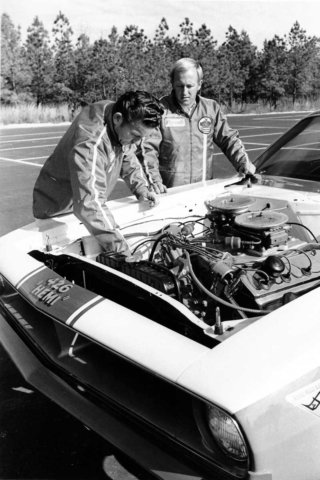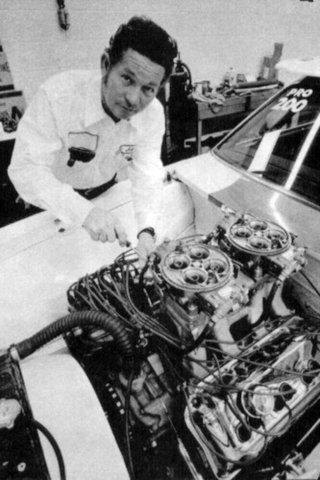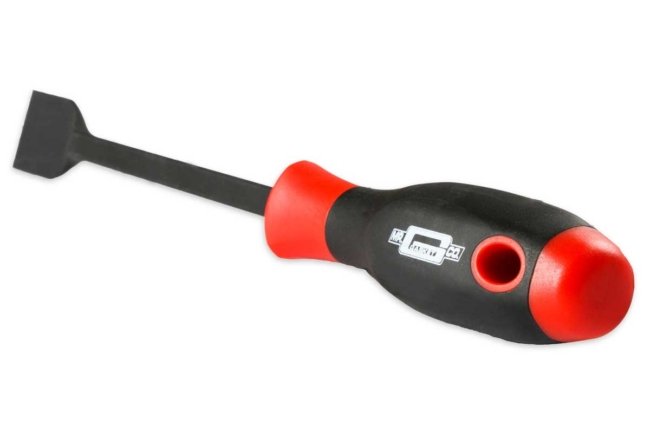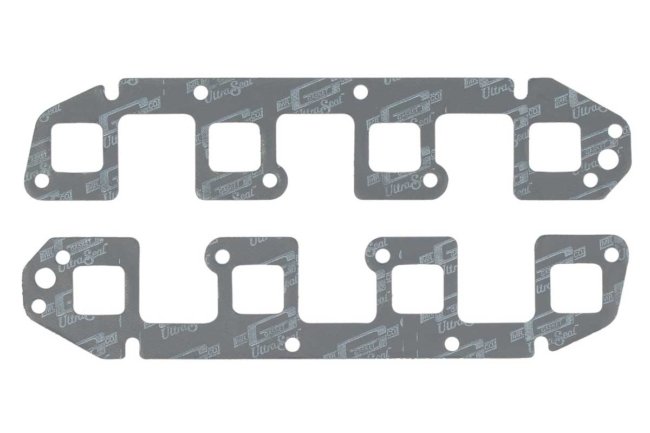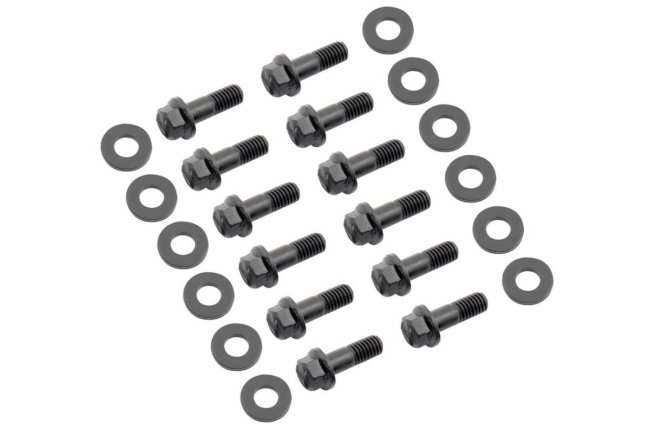
A couple of times, Mopar Connection Magazine has reviewed vintage Mopar ads that discuss the extraordinary accomplishments of Ronnie Sox and Buddy Martin, aka Sox & Martin. Sox handled the driving chores and was second to none, Martin was the genius behind the team’s business and sponsorships, and Dave Christie was the jack of all trades on the team, but the unsung hero was engine builder Jake King.

Above: Although Sox and Martin’s names were prominently called out on the doors of all their cars, Jake King’s name was visible on the doors as well. King was a quiet, humble man who did not seek the spotlight. Instead, he was satisfied working on the team’s Hemi engines. (Photographer unknown)
John P “Jake” King grew up on a farm near the rural town of Burlington, North Carolina. While still a child, King’s father and uncle opened a small garage, and it was during this time King started tinkering with cars. His first car was a used 1936 Ford, and his interest in vehicle racing began in the late-1940s.
Before his employment with Sox & Martin, King drove a series of Super Stock Fords. He was an outstanding talent as a driver, but his real passion and aptitude was building engines that were light years ahead of the competition. King gave up the driver’s seat and began developing high-horsepower 426 Hemis for Sox & Martin’s 1965 altered wheelbase (AWB) Plymouths.
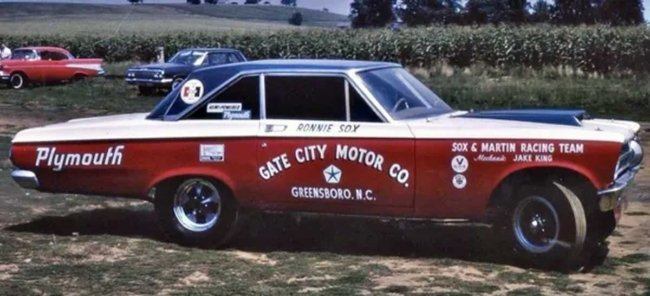
Above: Sox & Martin’s altered wheelbase Plymouth ran in A/FX in competition; however, because of the limited event schedule, it proved to be a great match race vehicle. (Photographer unknown)

Above: The wheels were moved forward (front and rear) to gain traction. When accelerating from the starting line, a King-prepared Hemi quickly put the Plymouth on the rear bumper. (Photographer unknown)
A fact known by most familiar with King’s race prepared Hemis was each engine was painted in a Ford blue hue to make it quickly evident that it was a King Hemi. At York U.S. 30 dragstrip in the spring of 1965, a King Hemi powered Sox to the first ever sub-10 second quarter-mile elapsed time in a naturally aspirated door-slammer. King’s engine featured a new Hilborn fuel-injection system developed by Chrysler.
After great success building fuel-injected match race Hemis for the AWB Plymouths and then the slew of championship Super Stocker engines, in 1970, the all-new Pro Stock eliminator proved the ultimate for King. Taking advantage of the liberal rules set by the National Hot Rod Association (NHRA), King maximized the Hemi with a tunnel-ram intake and twin Holley 4500 series carburetors and performed unlimited modifications to the internals of the Hemi. If the engine fit under the hood scoop, it was fair game.

Above: The team of Sox & Martin found the Winner’s Circle often in the infancy of Pro Stock eliminator, including the 1971 NHRA Winternationals. Mr. Gasket celebrated the win with a full-page advertisement about the feat. The team in the photograph consisted of (L to R) Ronnie Sox with the “Wally,” Buddy Martin, Jake King, and Dave Christie. (Photographer unknown)
The initial Pro Stockers were built from stock-framed, factory-produced chassis. Each car ran with a weight factor of 7 pounds per cubic inch, which placed the Sox & Martin 1970 Hemi ‘Cuda at just under 3,000 pounds. For the first two seasons of Pro Stock, Plymouth and Dodge dominated, and at the end of the 1971 season, King earned the Car Craft Magazine All-Star Racing Team Mechanic of the Year Award for his outstanding efforts in producing the most powerful Pro Stock Hemis on the planet.
One of King’s secrets to his engine-building success was his reliance on Mr. Gasket’s engine gaskets. As stated in the advertisement, King quickly recognized that high performance needed the best products engineered and designed to fit. Teamed up with Sox & Martin, Mr. Gasket earned the reputation of being “the world’s fastest gaskets.”
Above Left and Right: Whether at the shop or the track, Jake King was comfortable leaning over the fender of a Mopar to fine-tune the Hemi. (Photographers unknown)
By 1972, NHRA officials were concerned about the supremacy of the Mopars and how the lack of balance in the class might turn off the fans. Sadly, to end the dominance of the Mopars, NHRA started and then continued adding weight to the Dodges and Plymouths. Even King’s powerful engines could not overcome the additional mass and would eventually no longer tower above the competition.
Sox & Martin’s wins ended, and at the close of the 1974 season, the team dissolved its business, and everybody went their separate ways. Sox would bounce around trying to find another ride, and Martin had several companies and investments outside of drag racing. Sox & Martin would team up on and off through to the Pro Stock Truck era, but the winning was over. Christie would move to Jenkins Competition and later Hendricks Motorsports.
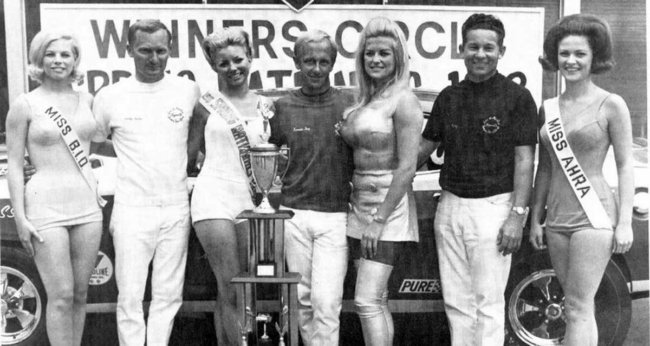
Above: Sox & Martin succeeded at American Hot Rod Association (AHRA) events in Super Stock eliminator. In the 1970s, the team would perform well at AHRA races because the sanctioning body did not hammer the Mopars with significant volumes of weight in Pro Stock. One of the plusses to winning was posing with several beautiful women. (Photographer unknown)
King returned to Burlington, opening a two-bay Gulf Service Center. He and his wife, Virginia, raised three children. In July 1995, King passed in his sleep just one month after he had been inducted into the Super Stock Magazine Hall of Fame. Drag racing and the world lost a quiet, peaceful man with his death.

Above: In 1971, Jake King received additional honors that pertained to the 1971 Winternationals Pro Stock win. S-K Tools recognized King’s achievements.
Mr. Gasket, a Cleveland, Ohio-based company, was founded by Joseph F. Hrudka in 1965. The company produced special gaskets with materials that were designed to withstand high temperatures. Hrudka and his brother, Tom, were active in the mid-west drag racing scene and hoped to sell enough gaskets to cover their annual racing costs (around $6,000). By 1967, the company sold over $600,000 in gaskets and additional automotive parts.
The company’s bottom line continued to grow, with sales exceeding $3 million in 1969. That year, Hrudka took the company public, selling one-third of its equity for $2.7 million. In 1971, Hrudka sold Mr. Gasket to W.R. Grace & Co. Through the transaction, Hrudka attained $6 million.
Above Left: Mr. Gasket sells tools, including a gasket scraper to remove the competition’s gaskets. Above Right: Mr. Gasket has exhaust gaskets for all the three generations of the Hemi engines, big- and small-blocks.
Grace & Co.’s management expanded the company to six locations in Cleveland and additional plants in California and Mexico. However, by 1981, Mr. Gasket’s business had declined, and Hrudka repurchased it for $4 million. Hrudka immediately returned his former associates to their previous posts within the company, and Mr. Gasket acquired additional automotive parts manufacturers to enhance the company’s returns.
Under Hrudka, Mr. Gasket doubled its offerings to over 9,000 products. Again, Hrudka took the company public in 1983, selling nearly 25% of the firm’s stock for $32 million. Sadly, Mr. Gasket fell victim to a slowed market in 1988, the first of four consecutive years of sizeable losses. During the downtime, Mr. Gasket was hit with a trademark $10 million infringement case, involving the company’s product packaging. With little means to pay off the debt, in 1991 Mr. Gasket filed for Chapter 11 bankruptcy protection.
Above Left: Quality header bolts are a must to ensure proper gasket sealing. Mr. Gasket has several options for the Mopar products. Above Right: Mr. Gasket offers many other products, including fuel system components.
Echlin Inc. purchased the Mr. Gasket Company in 1993 for $35 million. The Mr. Gasket company and the name continued to bounce around from company to company until 2015 when Holley Performance Products acquired the El Paso, Texas-based MSD Group. The MSD Group included iconic brand names such as Mr. Gasket, Accel, Edge, Hays, Lakewood, Mallory, MSD, Racepak, Superchips, and Quick Time.
Under the Holley umbrella, Mr. Gasket remains the go-to gasket source. Still, the company has expanded into exhaust products, fasteners, tools and shop supplies, engine mounts, cooling systems, fuel, and ignition components. To check out the vast array of products designed for Mopars, take the time to click over to Mr. Gasket. It has nearly six decades of satisfied customers, including the late Jake King.


